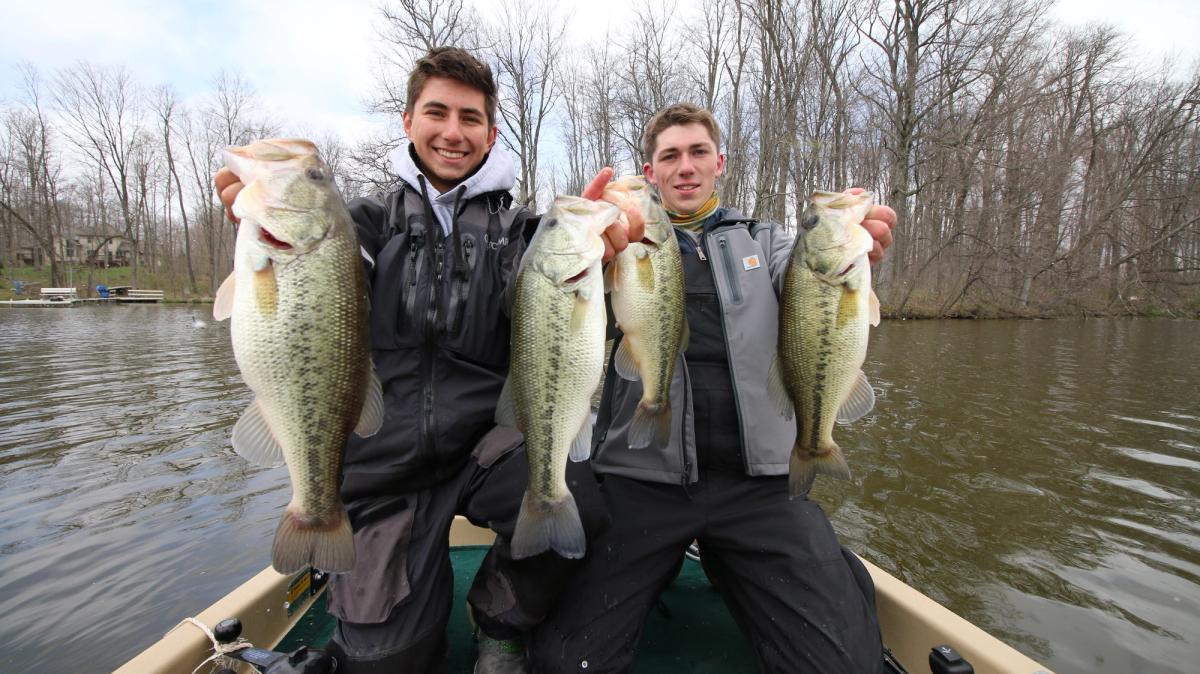Your Complete Winter Fishing Guide Of Tips And Tricks
As long as I can launch my boat and reach spots that are ice-free, I am going to fish for bass throughout the winter.Since weather plays a key role in winter fishing, I have found the best time to chase bass is after two or three days of stable weather. A cold front usually shuts down the fishing until the weather stabilizes again.My favorite wintertime lure throughout the years has been a suspending stickbait in black/chrome, blue/chrome, purple/pearl, clown or purple/chartreuse hues. The suspending stickbait is the ideal lure for catching sluggish bass because its neutral buoyancy allows me to keep the lure in a bass’ strike zone for several minutes. The lure works best in clear to slightly stained water although I have caught some quality bass on the stickbait working it in murky shallow water during late winter.
Winter fishing is also about knowing where to find fish. Wintertime bass on my home waters usually suspend 10 to 15 deep along secondary points or channel bends in the major creek arms. After finding suspended bass with my electronics, I make long casts to the fish with a medium-diving suspending stickbait and crank the lure down to its maximum depth. Then I employ a twitch-twitch-pause retrieve. I usually count during the pause to determine how long the lure needs to sit still before a bass hits it. During the coldest weather, I have caught fish on pauses as long as a 30-count.On calm, sunny days when the water temperature is below 40 degrees, I switch to 1/2- or 3/4-ounce jigs tipped with soft plastic chunks to catch bass hugging rocky bottoms. A good color combination for fishing in clear water is a brown/purple jig with a green pumpkin trailer. Try a black/blue jig with a black/blue or black/chartreuse trailer for tempting bass in dirty water.
Cast the jig to the shallows and let it fall to the bottom. Then lift your rod about 6 inches to move the jig and then let it drop again. Keep your rod tip low to make sure the lure is constantly bumping the rocks throughout your retrieve.A jigging spoon and plastic grub are prime lures to use from early to mid winter fishing when bass move deep in ultra-clear lakes such as Table Rock in Missouri and Bull Shoals in Arkansas. Main lake points close to channel swings are ideal locations for vertical jigging a slab spoon or plastic single-tail grub for bass either suspended in standing timber or holding near the bottom.Wintertime bass on clear reservoirs frequently range in depth from 30 to 60 feet deep so a heavy slab spoon (at least 3/4 of an ounce) is needed to reach these fish. Try a chrome spoon on the rare sunny winter fishing days and a white model for overcast conditions.After determining the depth of the fish, drop your spoon down to the bass and vary your presentation until you find out what the fish want. Most of the time bass prefer the spoon jiggling slightly, but sometimes you have to jerk the spoon as high as 4 feet and then drop it to trigger a strike.
If bass continue to ignore the spoon, switch to a 5-inch smoke/pepper flake single-tail plastic grub impaled on a 5/16-ounce jighead. Barely shaking the grub or letting the drift of the boat generate action to the lure is all that is necessary to coax sluggish bass into biting the grub.A productive lure for working along bluffs for wintertime bass is a 1/2- or 3/4-ounce tailspinner that can be worked down to depths of 40 to 45 feet. Walk the tailspinner down the bluff ledges by casting it close to the bluff wall and let it fall to the bottom. Then barely pull it to get it to spin and let it fall again to the next ledge.If a bluff has standing timber on it, switch to a 1/4-ounce bucktail jig (white or gray) which will hang up less than the tailspinner in the wood cover. Employ the same presentation as the tailspinner of stair-stepping the lure down the bluff ledges.Slow-rolling a spinnerbait around cover and along the rocky bottom also produces strikes from wintertime bass in stained to murky water. Select a white-and-chartreuse 1/2- or 3/4-ounce spinnerbait with gold and nickel willowleaf blades and use a stop-and-go retrieve to bang the blade bait into cover. Then let it flutter down to trigger a reaction strike.
A green pumpkin or brown finesse jig tipped with a green pumpkin or root beer/green flake plastic chunk is a top choice for fishing chunk rock banks in dirty water during a warm winter day. Drag the jig slowly to keep continuous contact with the bottom and add some small hops to the retrieve to tempt bass in the cold, shallow water.
Updated December 29th, 2020 at 2:43 AM CT


